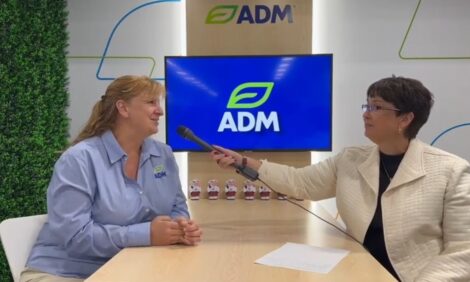



Heifer Freestalls: Size Does Matter
Check out the Dairy Idea Plans developed by the Department of Agricultural & Biological Engineering & Penn State Extension.
Freestall shelters can be a good choice for dairy heifers. The overall building footprint and bedding requirement is typically less compared to bedded pen heifer shelters containing a similar number of occupants, but there are challenges too. The number and size of heifers within a group containing freestalls is defined by the number and size of stalls available. To be successful, heifer freestalls need to be the correct size for the animals using them and offer the most comfortable resting option within the pen. Freestall size and structure should allow each heifer in the group to enter, recline, rest comfortably, rise, and exit the stall easily. Size does matter, so an accurate weight and frame size estimate of the group of occupants is necessary to ensure the stall bed and freestall structure dimensions suit.
Herds that calve more 'seasonally' than 'uniformly' throughout the year, along with variations in the number of heifers born per month, need to be considered when determining stall numbers in each group. Increasing stall numbers approximately 35 percent is not uncommon.
If the shelter contains heifer groups up to pre-calving be sure to accurately note the farm’s typical age of calving rather than their age at calving goal. A difference of two to three months may lead to overcrowding and/or an incorrect heifer and stall size match within groups.
Heifer age is often not an accurate gauge of heifer size on many farms. Freestall dimensions are more accurately determined by heifer mass, so an accurate weight estimate for heifers intending to use the stalls is necessary to ensure good stall acceptance and use. Heifers are more likely to readily use freestalls that are slightly larger compared to slightly smaller, so select dimensions that accommodate the expected size of the heifers leaving a group
In 2007 Penn State Heifer Freestall (Cubicle) Types and Details (DIP 822) was developed using the 75th percentile of heifer body weight and wither height data at various ages from the National Dairy Heifer Evaluation Project (1991-92). The 75th percentile represents the percentage of observations that fall below that level.
For dairy heifers weighing 300 to 1,300 pounds, Penn State Extension currently suggests five different freestall size and structure dimensions. A weight variation increment of 200 pounds defines each heifer group. Additionally, these size increments likely place heifers in management groups requiring similar care, feeding and treatment.
Like the development of mature dairy cow freestall recommendations, correlation calculations were used based on animal size to determine suggested stall size and placement of structural elements (stall divider, neck rail, brisket locator, etc.). Penn State Dairy Idea Plan DIP 822 Heifer Freestall Types & Details suggests a range of six to nine inches in stall length, two inches in stall width, and two to four inches for structural elements. Given a choice, using dimensions offered on the right-hand side of the range (longer, wider, higher) typically works best.
These dimensions have been used successfully for years, but occasionally they are called into question on farms where heifers are reluctant to use the freestalls, not using stalls as intended or choose to rest in scrape alleys. In some cases, a hard, uncomfortable resting surface, or inadequate bedding is to blame, but more often freestall size and structure does not suit the occupants. After observing heifers and taking a few measurements it usually becomes apparent that heifers within each group fall somewhere between the 75th and 95th percentile for weight and wither height of heifers measured in the Dairy Heifer Evaluation Project, placing them within the next largest category of suggested freestall dimensions listed in DIP 822.
In these situations, freestall acceptance and use is often improved by moving the neck rail forward or slightly higher to allow heifers to enter the stall placing all four feet on the stall bed and to recline more easily. If resting space is too short, the brisket locator can be moved forward or removed.
The stall bed needs to be both comfortable and durable. Resilient mattress and ‘soft’ mats are usually good stall bed choices for growing heifers. Generously bedded stalls are also a good option but generally require more maintenance since heifers tend to 'paw and dig' the bedding material. Bedding is still necessary to improve comfort, encourage stall use, and promote cleanliness. However, bedding addition is often more difficult (and sometimes less likely to get done as needed) since heifers continuously occupy the space. Proper planning and gate placement allow the ability to confine heifers away from the stall rows being bedded. Regular removal of manure and soiled bedding from the stall surface is necessary to improve heifer cleanliness.
Designed and managed properly heifer freestall shelters can be a good fit on productive dairy farms. To perform successfully the freestalls must be the correct size and offer the most comfortable resting space for heifers using them. Accurate analysis of the farm's replacement herd size and make-up are also essential for determining the number and size of groups needed.
For more information on freestall shelter layout alternatives and suggested freestall size check out the Idea Plans available on the Penn State Agricultural & Biological Engineering website.
Photo courtesy of Dan McFarland, Penn State Extension


